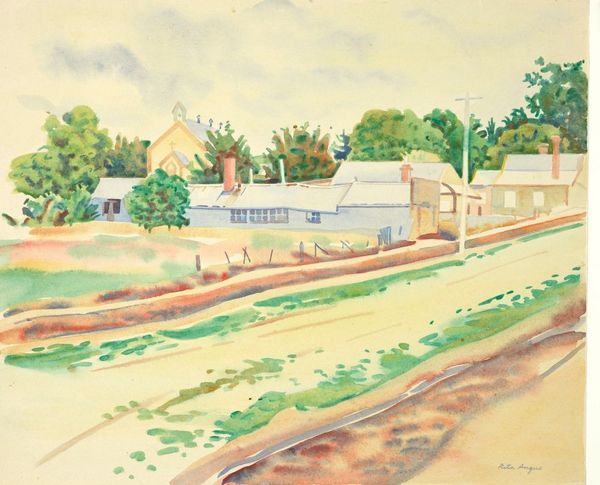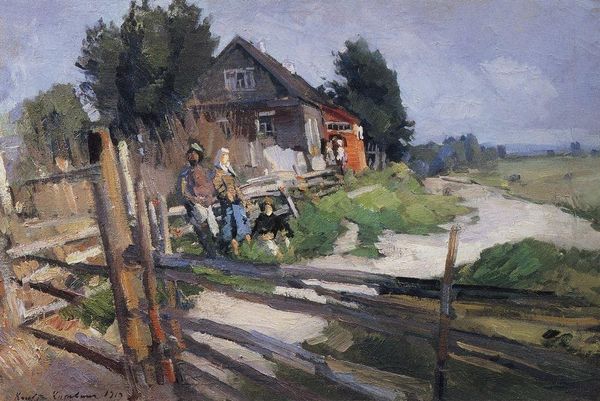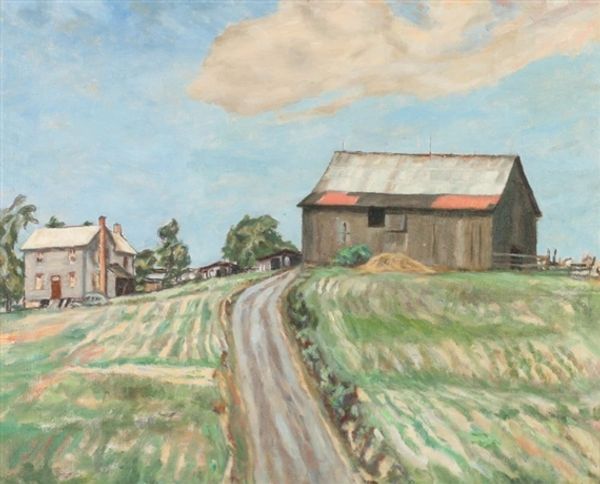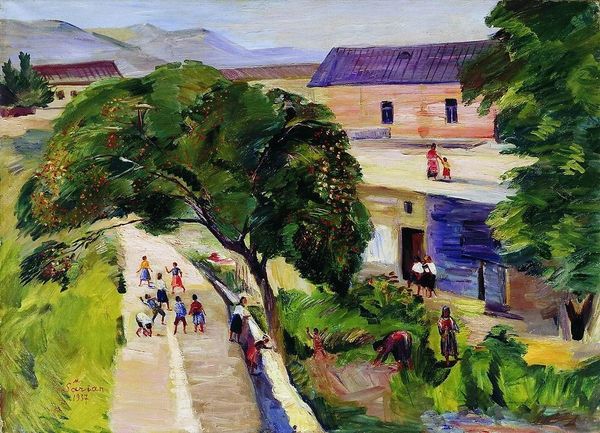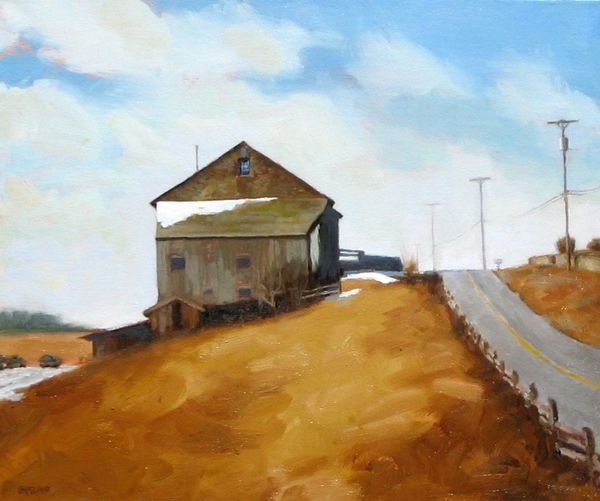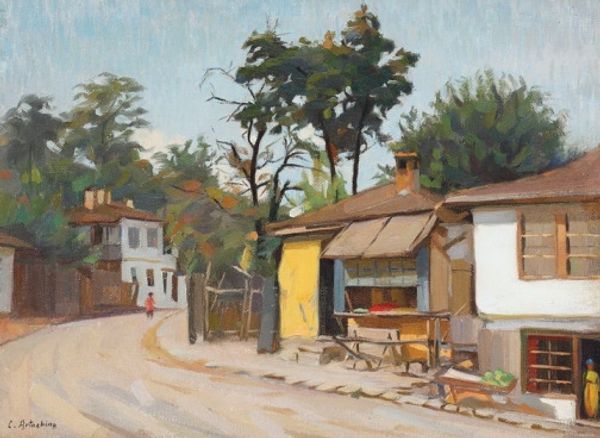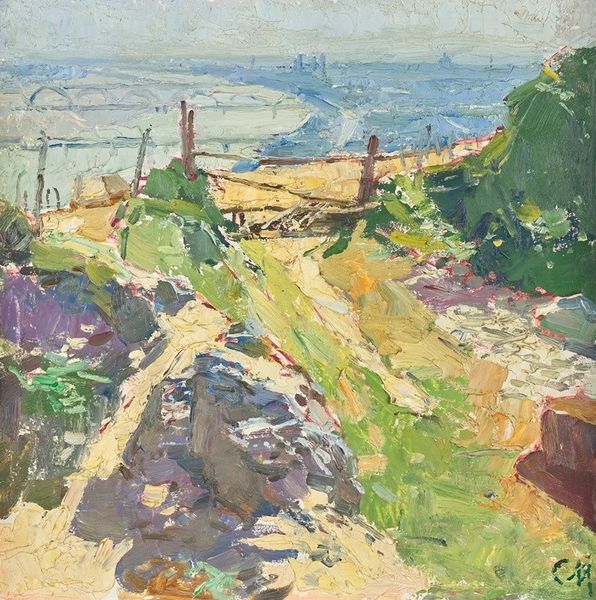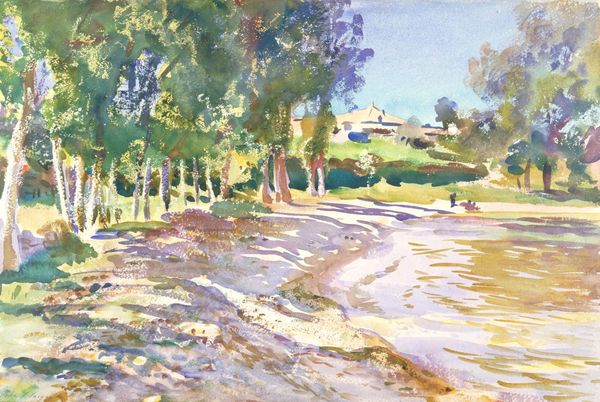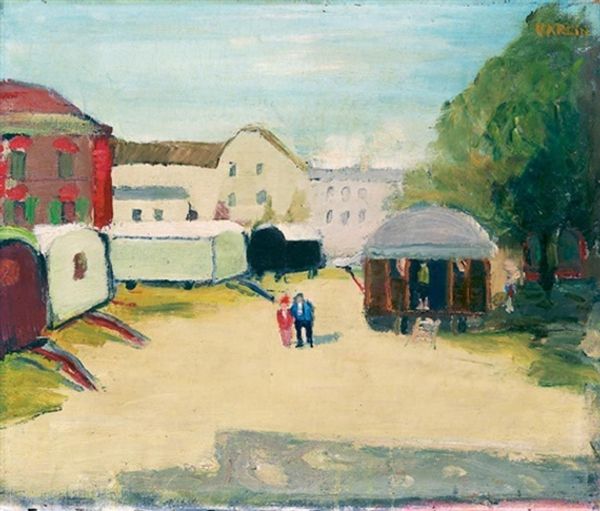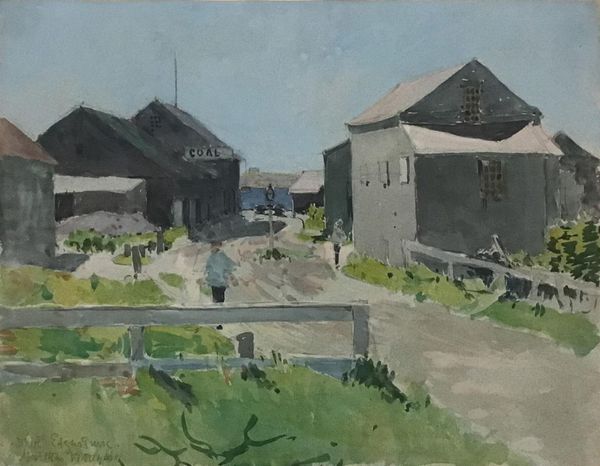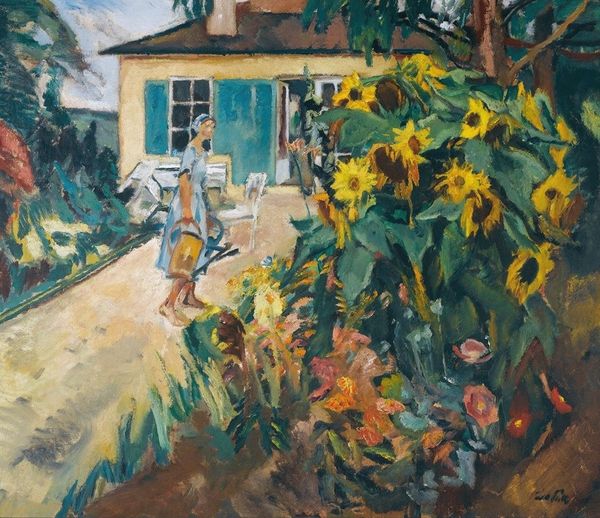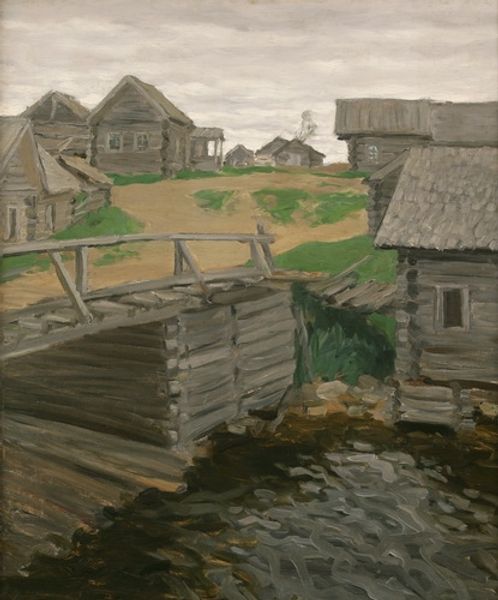
Dimensions: 50.17 x 59.69 cm
Copyright: Public domain
Curator: Willard Metcalf's "Inner Harbour, Gloucester," painted around 1895, is a remarkable example of American Impressionism. What's your initial take on this piece? Editor: The overwhelming sense is one of peaceful industriousness, if that makes sense. The bright hues make the viewer feel bathed in sunlight, but it doesn't distract from the reality of the setting, which appears as a coastal work town. Curator: Precisely! Look at how Metcalf balances form and light. The composition, with its strong diagonal leading into the harbor, guides your eye. The paint is applied with short, broken brushstrokes, capturing the transient effects of light and atmosphere— quintessential impressionism. Editor: I would argue that his technique situates it as more post-impressionist. Given its rendering of Gloucester, a bustling harbor known for fishing and boat building, what commentary might Metcalf be making about labor and leisure? Is it possible that he is critiquing industrialization and painting this slower way of life? Curator: Intriguing. From a purely formal perspective, the buildings, painted in those luminous yellows and reds, aren't just representations of structures, they are studies in color and light. Note how the color palette contrasts the natural landscape with man-made structures, guiding our analysis of aesthetic harmony. Editor: Yes, and these visual harmonies invite interpretations beyond the strictly formal, as we contemplate the labor required to sustain this "harmony," and whose labor specifically. Curator: You bring up a good point. However, the overall composition—the arrangement of shapes and the interplay of light and shadow—create an undeniably balanced and aesthetically pleasing whole. Editor: True. Regardless of Metcalf's intentions, the painting captures a specific historical moment and leaves us considering the ways we interpret our own relationship to work. Curator: Indeed. It prompts us to consider Metcalf’s command of light, form and color as primary expressive elements. Editor: And consider the social, economic, and labor context intertwined in such landscapes of beauty and peace.
Comments
No comments
Be the first to comment and join the conversation on the ultimate creative platform.
